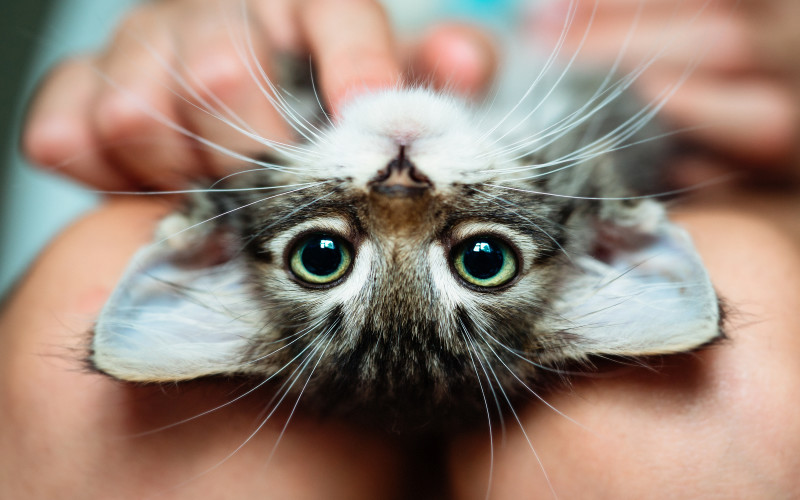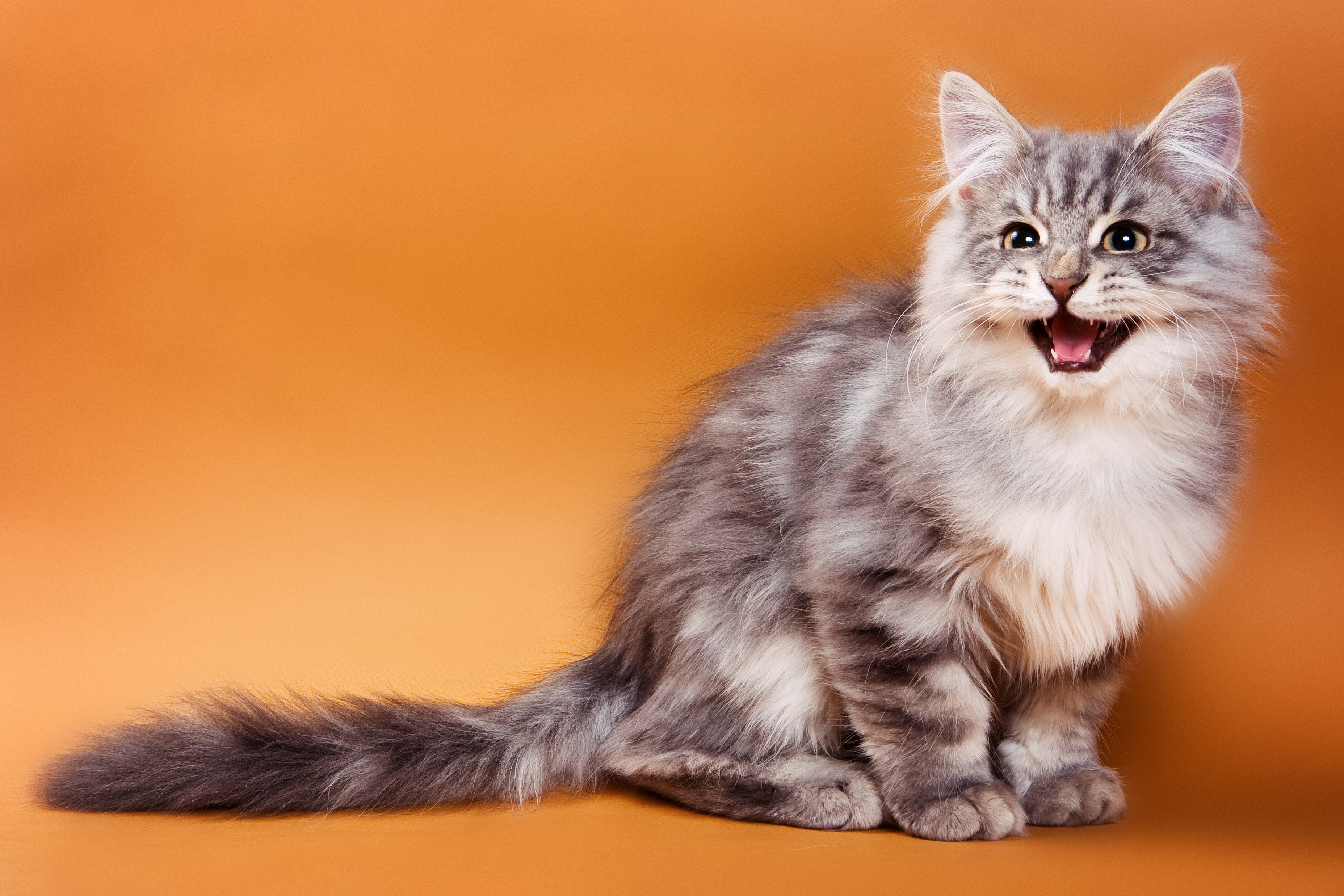
Feline panleukopenia is a virus that can make cats -- and especially kittens -- severely ill. Here is what you need to know.
What It Is
Panleukopenia, also known as feline distemper, is a virus that is part of the Parvovirus family (which has a dangerous strain that also infects dogs) known as feline panleukopenia virus (FPLV).
Feline panleukopenia (FPL) can cause a decrease in the number of white blood cells in the body (which help the immune system fight infections) and in severe cases, white blood cell counts can drop from the normal several thousand/ml to only a few hundred/ml, making the cat vulnerable to secondary viral or bacterial infections.
Panleukopenia can be fatal; the virus infects and kills cells that grow and divide (like those in bone marrow, intestines, or even a fetus), eventually resulting in the destruction of those, along with leading to serious dehydration and sepsis.
FPL is extremely contagious and is typically spread through direct contact with an infected cat or through contact with contaminated water, objects, nasal secretions, urine, or stool. It can also be spread in utero or through breast milk if a pregnant cat is infected. The incubation period until symptoms develop is generally around 3-5 days. This virus is only spread from cat to cat and does not infect humans.
Panleukopenia can be fatal, especially for kittens and sick cats. In healthy adult cats, the virus may be mild and even go unnoticed. It exists everywhere in the environment and nearly most of the world, and most cats are exposed to it at some point.
The good news is that FPL is not as frequently diagnosed as it once was, due to widespread vaccinations, and cats who survive an initial bout will become immune to another infection. However, it can still run high in unvaccinated groups of cats in shelters, catteries, kennels, pet stores, and feral cat colonies; it's also especially prevalent in warmer months where cats tend to come into contact with each other more.
Symptoms
Some of the clinical signs of feline panleukopenia include:
- High fever
- Vomiting
- Diarrhea, sometimes bloody
- Dehydration
- Depression
- Lethargy
- Loss of appetite
- Hiding
- Anorexia
- Anemia
- Dull and rough coat
- Lesions
- Loss of skin elasticity
- Purulent (green/yellow) discharge from eyes and nose
- Neurological issues, such as lack of coordination
- Collapse
- In severe cases involving young kittens, the only symptom may be sudden death
These symptoms may vary and tend to be more severe in kittens, who are more susceptible to the disease, than adult cats. Kittens born to pregnant cats infected with FPL may suffer from developmental issues (such as tremors due to feline cerebellar ataxia, which damages the area of the brain that impacts motor control) or be stillborn.
Diagnosis
Diagnosis for feline panleukopenia can be determined by several factors and tests:
- Physical examination
- Exposure to the virus
- Lack of vaccination
- Visible clinical symptoms
- Decrease in red and white blood cells, specifically severe neutropenia (abnormally low count of a specific type of white blood cell called neutrophils) and lymphopenia (a condition in which blood is missing lymphocytes, or white blood cells)
- PCR (polymerase chain reaction) test, which detects the genetic material of the virus within days of infection
- Fecal viral antigen test (there is a chance of a false positive if a cat was vaccinated 5-12 days prior)
- Urinalysis
You will need to talk to your veterinarian in detail about your cat's health, lifestyle, and activities, especially regarding whether or not they have come into contact with other cats and whether they go outside.
FPL has symptoms that are similar to other diseases, such as feline leukemia (FeLV), feline immunodeficiency virus (FIV), and others, so the more information you can give your veterinarian, the better.
Treatment
There is no specific treatment for panleukopenia and there is currently no medication that is able to kill the virus, but there are several treatments that are helpful for infected cats, including:
- Antibiotics, which don't kill viruses but helps with secondary infections that may develop due to reduced immunity
- Therapies such as intensive fluid therapy, electrolyte, potassium, and glucose supplementation to fight off dehydration
- Antimicrobial, anthelmintic, and antiemetic therapy
- Immunotherapy
- Supportive care, usually in an isolation unit
- Blood transfusions (in severe cases)
With enough intense care during the initial stages, especially during the initial days, infected cats may be able to make a full recovery.
Because secondary infections (such as hypoglycemia, hypokalemia, hypoproteinemia, anemia, and others) pose a danger to severely infected cats, close supportive care is essential until the cat's immune system can fight off the virus on its own; without treatment, up to 90% of infected cats may die.
If a cat survives for at least five days, they have a higher chance of recovering from the virus. However, it may take a few weeks for your cat to go completely back to normal.
Prevention

Even though panleukopenia is extremely dangerous, there is thankfully a vaccine that can prevent infection. It's typically included in the FVRCP vaccine, which covers rhinotracheitis, calicivirus, and panleukopenia (the "P" in this combination vaccine).
Live vaccines shouldn't be given to cats who are ill, immunosuppressed, pregnant, or under 4 weeks of age. Typically, most cats receive their first vaccination at 6-9 weeks of age with boosters given until they have immunity. The initial immunity from the vaccine is strong but eventually decreases over time so booster shots are necessary every 1 to 3 years, depending on your cat's lifestyle and needs. Titer testing kits are available to detect whether cats are immune to FPL or need a booster. Be sure to discuss your cat's vaccine concerns and other health needs with your veterinarian.
The panleukopenia vaccine is relatively safe and has minimal side effects. However, as with everything, there is still a risk. Some cats may experience lethargy for a day or two but will go back to normal shortly. In rare cases, cats may experience a severe allergic reaction due to a sensitivity to one of the vaccine ingredients. If a serious side effect occurs (swelling or difficulty breathing), take your cat to the veterinarian immediately.
Kittens may receive temporary immunity through antibodies from their mother; however, this usually doesn't last more than 12 weeks, so they will need to be vaccinated later.
If you have a multiple cat household and one of your cats has contracted panleukopenia, you will need to separate and quarantine them from the infected one and observing them for any signs of illness. Cats shouldn't be allowed into the same space as an infected cat, even after they have fully recovered (since the virus still sheds) and even if the area has been disinfected. (Note: Your cat can be tested for the presence of the panleukopenia virus to see when they are no longer shedding the virus.)
Getting rid of all traces of the panleukopenia virus is difficult since it's a non-enveloped virus that is resistant to many disinfectants and can live for up to a year at room temperature if residing in organic material.
However, you should still make sure you thoroughly deep-clean any surfaces touched by an infected cat. This includes cleaning surfaces with a 2% household bleach solution and washing (or replacing) dishes, bedding, toys, and litter boxes (which should not be shared amongst infected and non-infected cats). It's important to wash your hands thoroughly with soap and water and use disposable gloves between handling your pets. Talk to your veterinarian about the best ways to prevent the spread of FPL.
Whether or not your cat is at risk for feline distemper, it's essential that you take them to regular vet checkups to keep them as healthy as possible. Pet insurance can cover some or all of the costs of treatment and vaccination. Look here to see our top picks for pet insurance.
What are the symptoms of feline distemper?
The early signs of feline deistemper include lethargy and loss of appetite, and eventually progress to severe, bloody diarrhea and vomiting.
Can feline distemper be treated?
Distemper can be treated and is considered curable. With a strong immune system, treatment, and supportive care, cats may be able to survive the infection.
Edited by:
Bryan Huynh
•
Product Tester & Writer
























